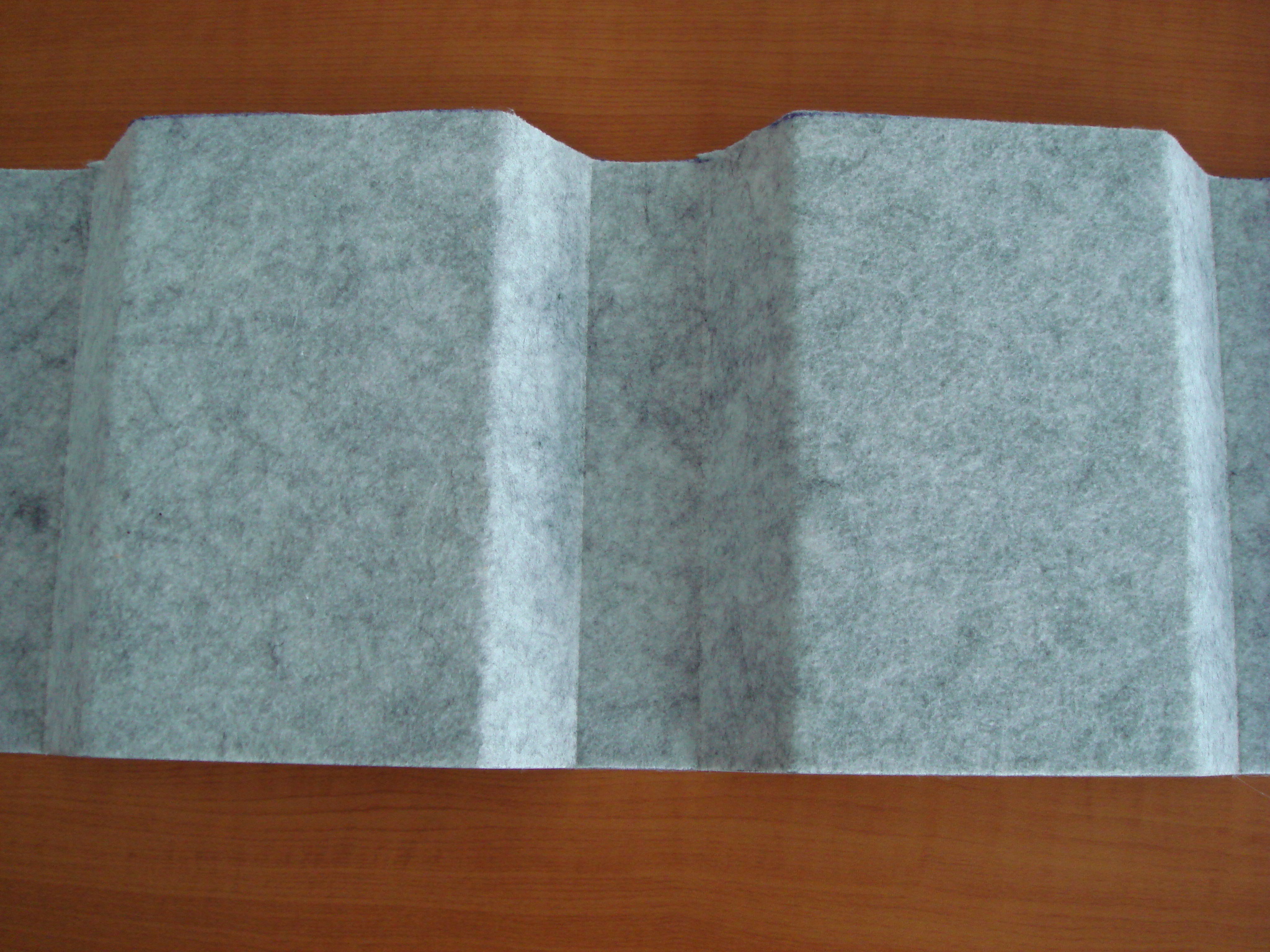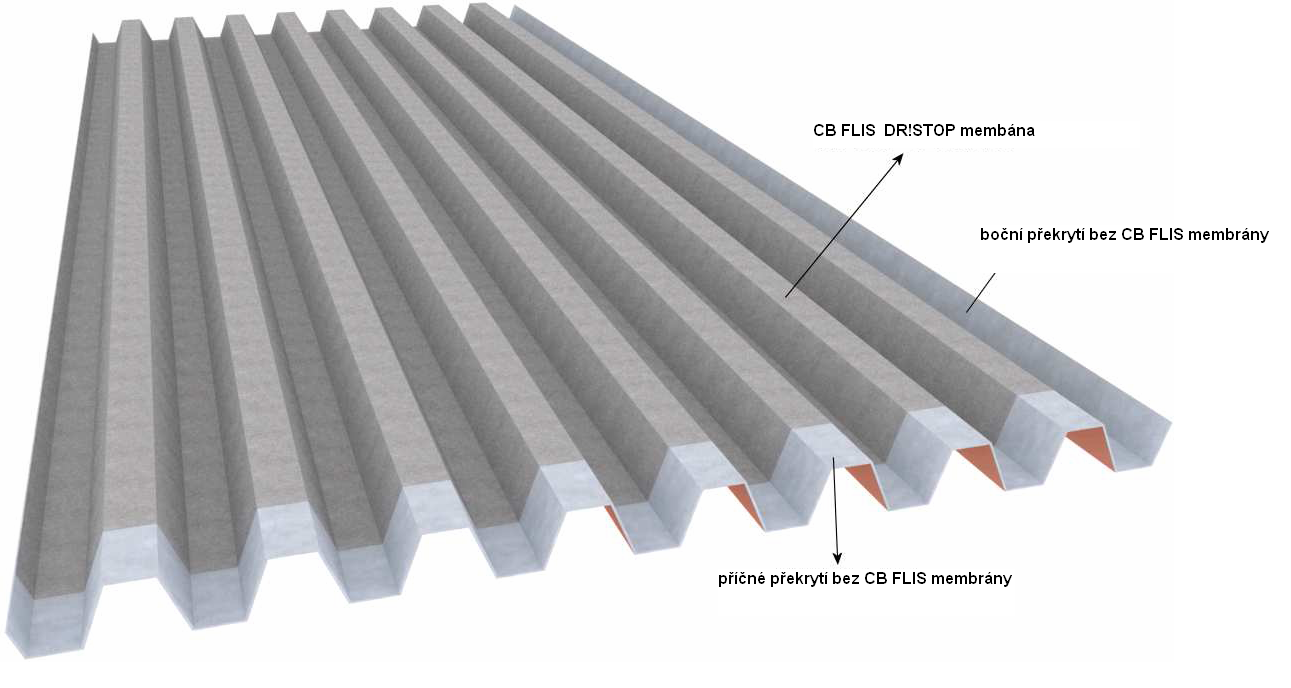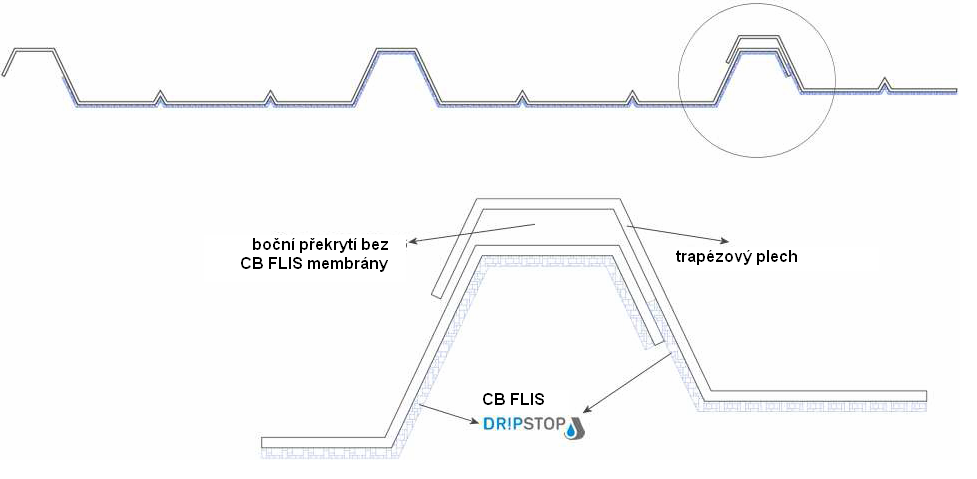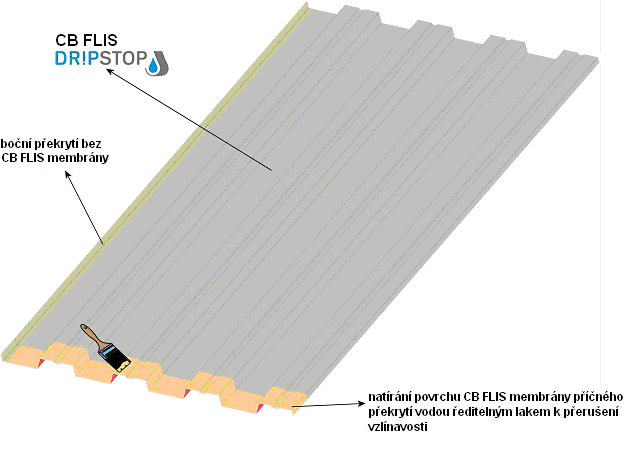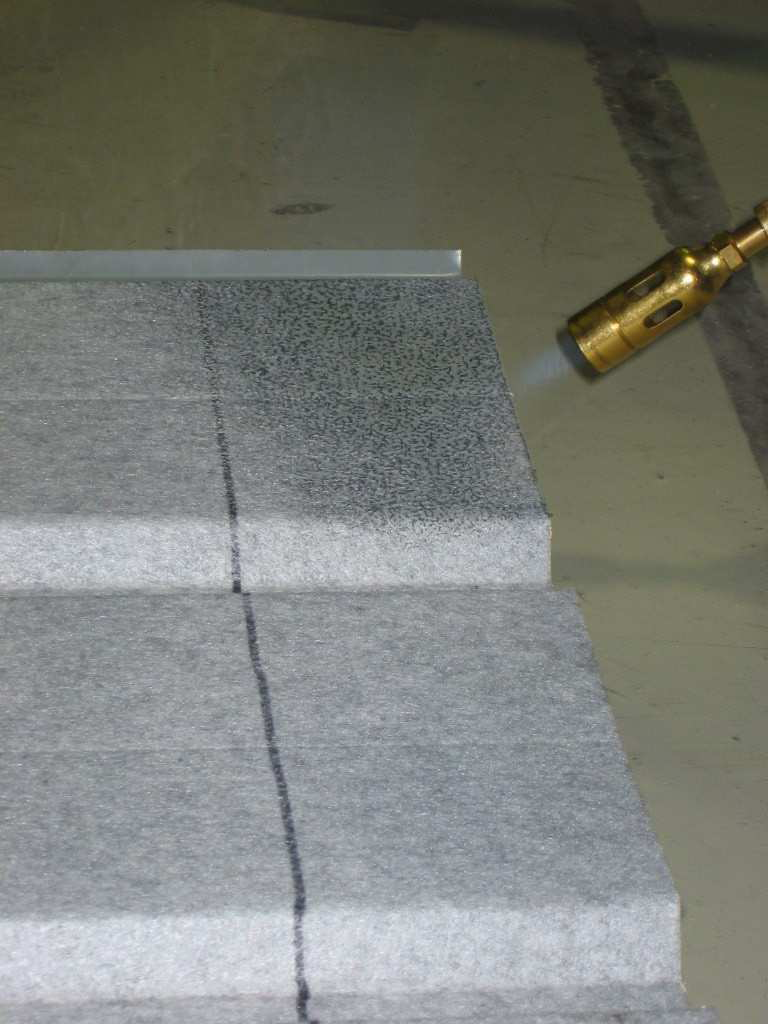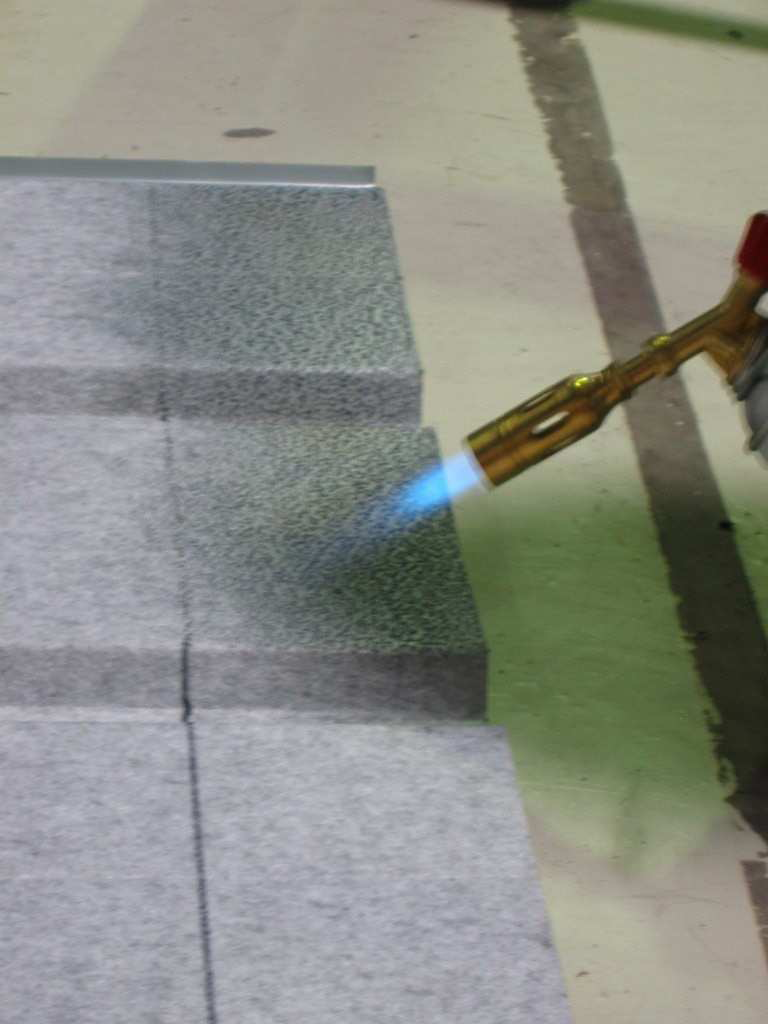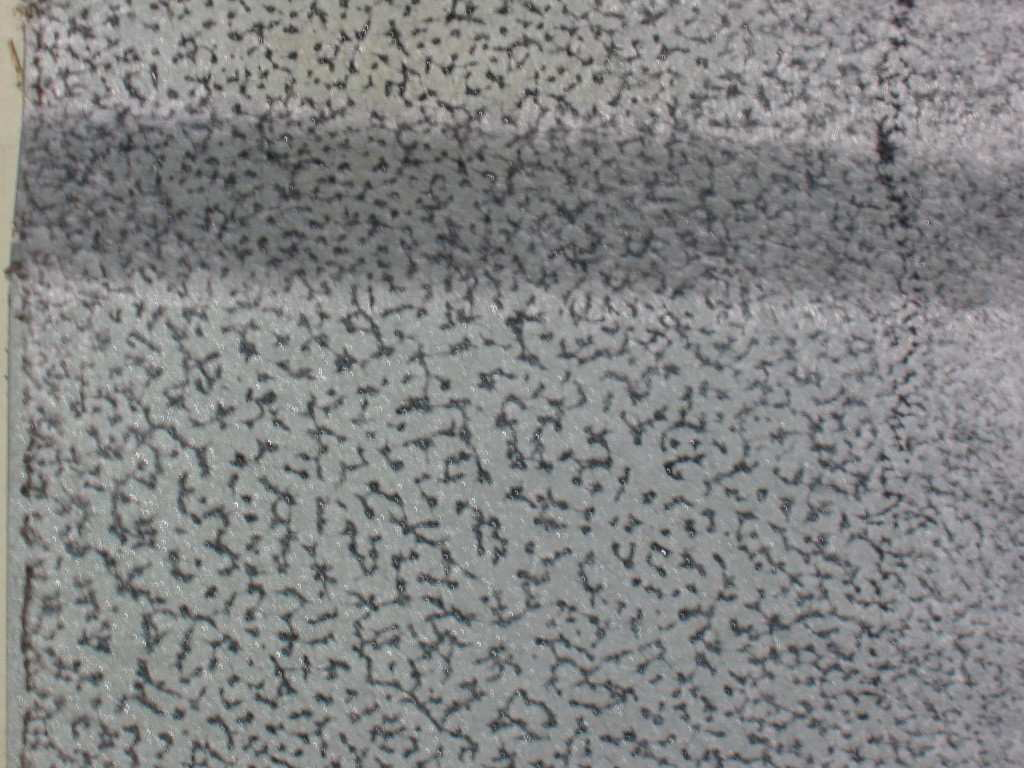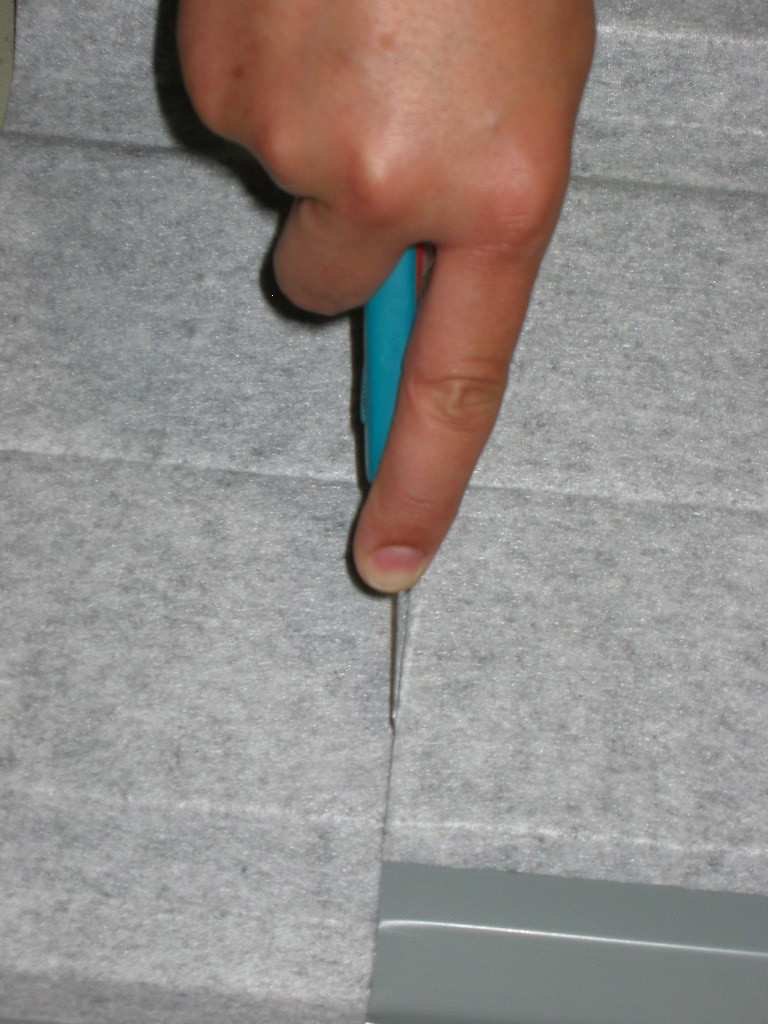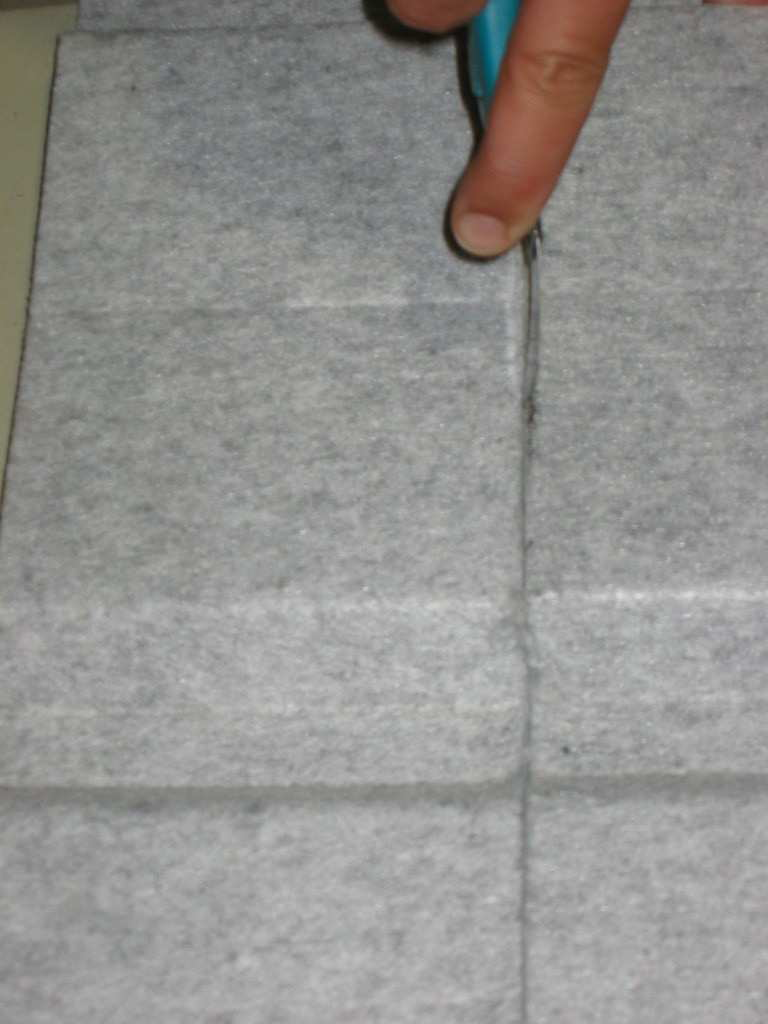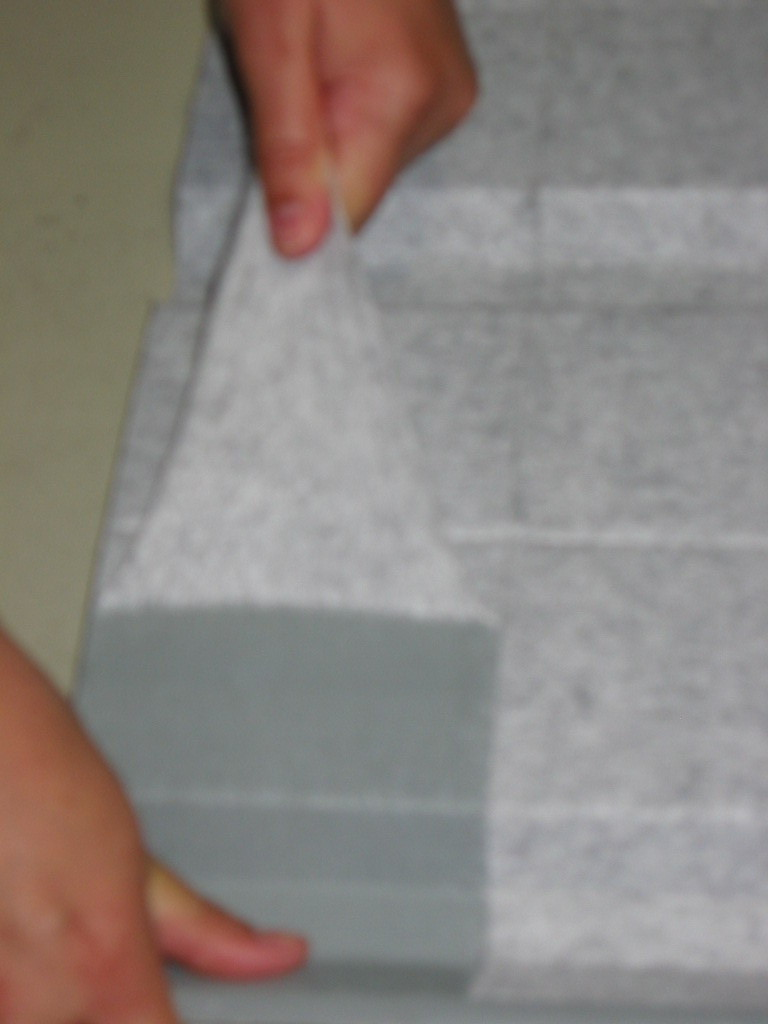CB FLIS – anticondensational treatment
CB FLIS
… anti-condensational treatment of trapezoidal metal sheets
Application:
Anti-condensation treatment FLIS CB (DR!PSTOP fleece) is applied to the inside of trapezoidal sheets and its purpose is to prevent condensation dripping into the interior of the building. It is mainly used in non-insulated warehouses, where the inside of the trapezoidal sheet due to changes in outdoor temperature is forming condensate. This then drips down and can damage the stored goods. Furthermore, this adjustment is widely used in agricultural buildings. In these there is, due to the high concentration of moisture from the housed animals, large condensation on the ceiling forming also at insulated roof. It is used everywhere, where condensate dripping from the ceiling would cause a problem.
Basic characteristics:
CB FLIS (DR!PSTOP fleece) is manufactured from variety of interconnected PES fibers. Among these fibers there are small chambers designed to store the condensate until the outdoor warming causes again the evaporating back into the room (around 500 g / m2 for 6 hours).
- Absorption of water: 700 to 900 g / m2
- Reduction of noise in the rain: – 3 dB
- Flammability class: A2
- The material is resistant to most chemicals and microorganisms
- No corrosion, since there is no direct contact of absorbed water the sheet.
- adhesion of CB FLIS (DR!PSTOP fleece) to the trapezoidal sheet is provided by special water-resistant glue whose structure and properties are not subject to aging effects.
For proper function of anti-condensation fleece it is necessary to provide sufficient air circulation in the building !!!
All trapezoidal profiles produced in České Budějovice can be supplied with CB FLIS treatment.
To avoid the intake of the moisture into the interior of the building, it is necessary before the assembly either to paint the anti-condensation fleece with clear acrylic paint or scorche it with gas burner.
When does the capillary attraction arise?
Capillarity is the ability of a substance to draw another substance into itself. It occurs when the adhesive (sticky) intermolecular forces between the liquid and the material are stronger than cohesive intermolecular forces inside of the liquid. This condition causes to create the concave meniscus there, where it touches the surface in a vertical position. The same effect is caused at porous materials, such as various mushrooms that tend to soak up liquid.
In case the roof panels are installed together with an anti-condensation membrane CB FLIS (DR!PSTOP fleece), it is important that the installation is carried out in such a way that there has been no possibility of arise of the capillary effect.
Consequence of capillary effect
In case the panels are installed with anti-condensation membrane CB FLIS (DR!PSTOP fleece) and the capillary effect was not prevented, the membrane will attract water from outside the roof. In case the water also contains impurity, the membrane becomes dirty and create conditions for growth of bacteria.
The emergence of capillarity is a natural property of any anti-condensation membrane. However, this effect should not be too strong, because it can have as well negative consequences. in the following two figures, you can see how powerful the absorbing effect can be. We put the samples in colored water to test the absorption effect on different materials.
Comparison of the effect of capillarity absorption
no prevention against capillary effect with prevention against capillary effect
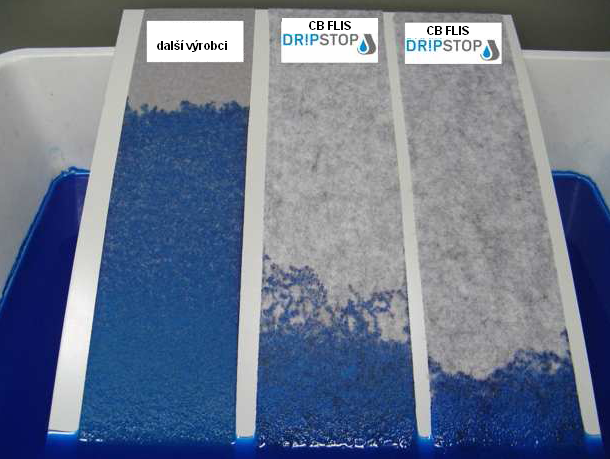
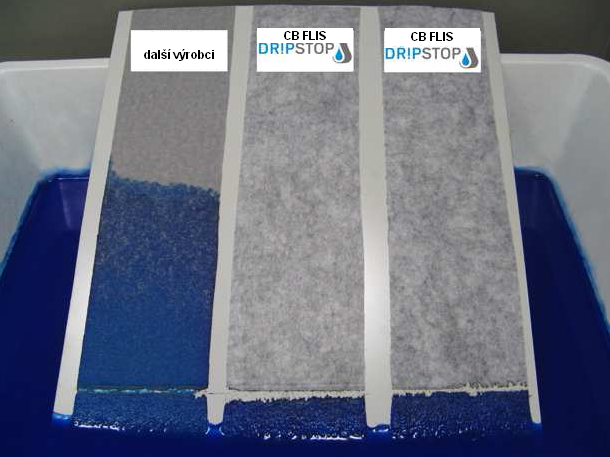
All samples were tested at an angle of 20 degrees for 24 hours.
The results of our testing has shown that some anti-condensation membranes on the market have a very strong absorption effect (on both images the first one from the left). It can be so strong that it is difficult to handle it even with preventive measures, which are presented in the next chapter. CB FLIS (DR!PSTOP fleece), on the other hand, behaves during the capillary effect much better and easier to work with.
How to prevent the capillary effect?
In order to avoid the danger of capillarity, it is important not to give CB FLIS (DR!PSTOP fleece) on spots where the panels overlap. On the longitudinal joints, this problem is solved so that the width of the CB FLIS (DR!PSTOP fleece) membrane is a few centimetres narrower than the sheet itself. However, more attention should be paid to places where the sheets transversely overlap and where the water flows from the roof to the eaves. In the case of transverse overlap there should be the last 5 to 10 cm of the membrane adjusted, in case of an overhang over the eaves it is sufficient to modify some 5 cm. Manual methods describing how to remove the membrane during preventing of the capillary effect are described at the bottom.
Ways to prevent capillarity:
CB FLIS (DR!PSTOP fleece) should not be put on sheets which are overlapping and on the end of the last panel, where the water flows into the drain pipe. If you don`t have a device that would automatically cut the increased centimeters of the membrane on the end of each panel, the membrane must be removed. The point is to suppress the essential function of this membrane in this part of the roof panel.
MANUAL METHODS
painting:
The last few centimeters should be painted with water-soluble paint. This method is very time consuming because you have to wait until the paint dries, and then perform the installation.
Scorche:
With this method, you need a gas burner or an electric heater (680 degrees Celsius), with which you must go through the membrane. This method is relatively easy and simple, but requires certain precautions.
Cutting:
You cut the membrane in the width that you need and pull it towards you, in order to pull it away from the metal panel. This method is not recommended since there is likelihood of damage to the finish of the roof panel during work.

